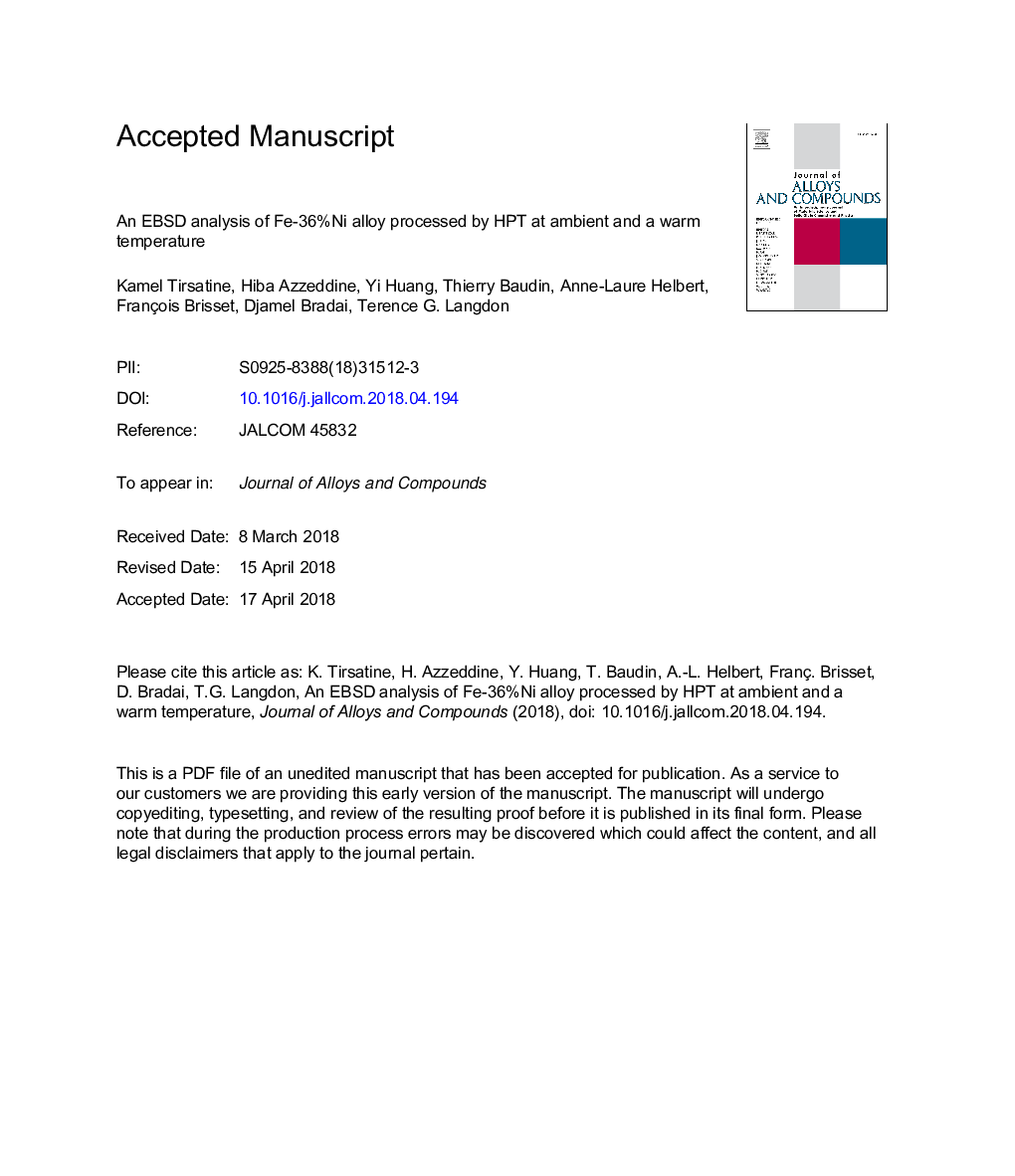| Article ID | Journal | Published Year | Pages | File Type |
|---|---|---|---|---|
| 7991437 | Journal of Alloys and Compounds | 2018 | 27 Pages |
Abstract
Electron backscatter diffraction (EBSD) was used to evaluate the evolution of microstructure and texture in an Fe-36%Ni (wt. %) alloy after processing by high-pressure torsion (HPT) up to 10 turns at ambient temperature and 250â¯Â°C. HPT processing led to a strong microstructural refinement with average grain sizes of â¼0.30 and â¼0.24â¯Î¼mâ¯at ambient temperature and 250â¯Â°C, respectively. The high-angle grain boundary fraction was slightly higher after processing at 250â¯Â°C and gradually increased with increasing numbers of HPT turns to saturate after 5 turns. The crystallographic texture after HPT processing at ambient temperature was characterized by typical A and B fibers of a simple shear FCC texture with domination of the B component. By contrast, the A, B and C components developed during HPT processing at 250â¯Â°C with C as the dominant texture component. The microhardness values for both HPT deformation conditions were very similar with a continuous increase with increasing HPT turns and almost saturation after 5 HPT turns. The grain size dependence of the microhardness followed the Hall-Petch relationship. The explanation for the microstructure, texture and microhardness difference was attributed to a dynamic recovery process that operates during processing at 250â¯Â°C.
Related Topics
Physical Sciences and Engineering
Materials Science
Metals and Alloys
Authors
Kamel Tirsatine, Hiba Azzeddine, Yi Huang, Thierry Baudin, Anne-Laure Helbert, François Brisset, Djamel Bradai, Terence G. Langdon,
